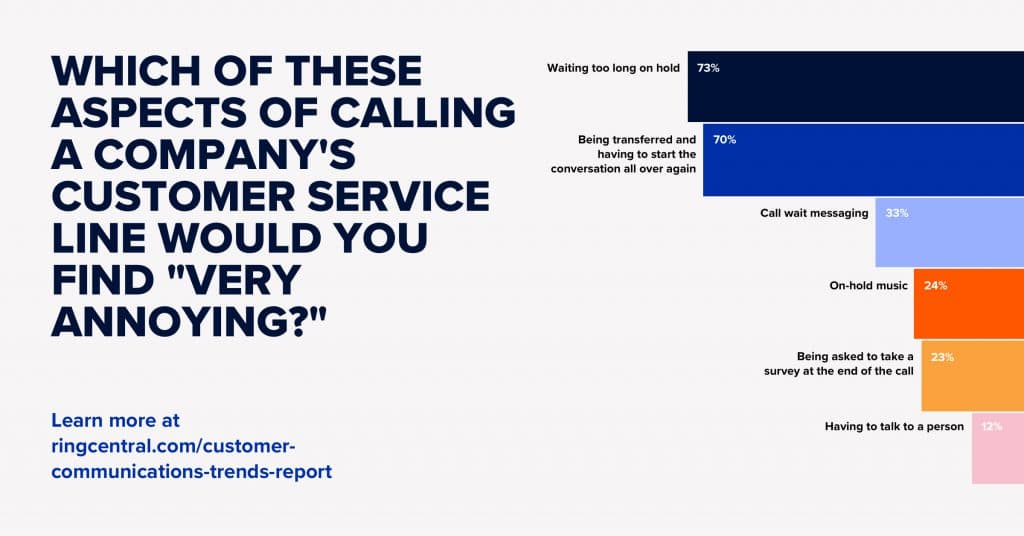It’s no secret that customer service matters to today’s customers.
But exactly how much it matters really can’t be overstated.
Fact: 80% of buyers today agree that the experience a company offers is just as important as their products or services.
And you better believe that customer service is at the center of providing an awesome experience.
As a result, a good support team should be both proactive and productive when it comes to building relationships with customers—proactive, so that they can put fires out before customers get annoyed, and productive, so that they can handle every customer question efficiently and make sure other customers aren’t waiting too long.
To do this, though, your customer service staff needs to know how to work as a team.
In this guide, we’ll talk about:
- The big-picture benefits of customer service teamwork
- What “better teamwork” means for your customers
- 7 ways to bring your customer service team closer together
- 1. Speed up and streamline communication between reps
- 2. Get aligned on your core beliefs and values
- 3. Make your hiring and training process meaningful, memorable, and personal
- 4. Review your customer personas together
- 5. Appoint a decision maker
- 6. Make customer information available to everyone
- 7. Be open about your goals and objectives
🌟 Want more happy customers? Grab our free eBook to find out what your employees need to keep your customers happy.
The big-picture benefits of customer service teamwork
Conventional wisdom tells us that customer service is a one-on-one kind of deal.
That is, a customer reaches out to you (or vice versa). You have a conversation. You get to the root of their concerns. Rinse and repeat.
But customer service is more of a team effort than you might think—and it’s better this way too. In fact, a customer service team not being in sync and making customers repeat themselves over and over again is one of the most annoying things for someone calling your business:
When support reps are able to work together seamlessly, they ultimately make each other’s jobs (and the jobs of everyone around them) so much easier. Here’s a quick breakdown of the benefits of customer service teamwork.
You can resolve your customers’ concerns faster
Not-so-fun fact: the average response time for a customer service query sits around 12 hours. (Not to be confused with its cousin, average handle time.)
Meanwhile, 75% of customers believe that it takes too long to reach a live customer service agent.
Both of these stats speak to the need for speedier, more efficient customer service. (Not to mention it would really help your customer retention rate.)
Reps who work together effectively will have an easier time knowing exactly who they should hand customers off to based on their strengths. Teams can likewise work together to resolve issues for customers rather than treat service as a solo act.
For example, a new rep should feel comfortable asking for assistance or handing off a problem that’s beyond their scope of knowledge. Even experienced reps might get overwhelmed with their queues and need a hand—a team mentality means that reps support each other to solve problems faster.
You provide a more consistent customer service experience
Each one of your reps brings something different to the table in terms of their skillset and personality.
That said, the level of service provided by one rep shouldn’t be totally different from the next—everyone on your team should be able to provide a high level of customer service.
Let’s say you have a customer who’s accustomed to working with a particular agent. That agent knows all about that customer’s history with your business, their preferences, their dislikes—maybe they’ve even chatted while on calls before and built up a friendly relationship. What happens when that agent is unavailable or leaves your company?
Customers today expect a personal, caring customer experience. Companies should strive to deliver such an experience through all of their reps, not just a select few.
By setting processes and expectations as a team, reps are encouraged to rise to the occasion and solve problems on behalf of every customer.
You avoid stress and burnout within your team
Perhaps the biggest benefit of customer service teamwork is making sure that no single rep is bogged down with tickets.
Because if you’re working in customer service, you have a lot of responsibilities on your plate. A staggering 74% of call center agents say that they’re going through or are on the verge of burnout.
Yikes. You don’t want burnout turning into employees being disgruntled or leaving.
The more evenly and appropriately (more experienced reps get more difficult questions) customer concerns are distributed, the more fair it is for your team—and it keeps stress levels low.
“But what does better teamwork mean for my customers?”
Good question!
Consider the most common complaints that come to mind when people aren’t happy with the customer service they received.
Slow service. Impersonal experiences. Having to bounce back and forth between reps.
Although we can’t have happy customers 100% of the time, effective teamwork helps address all of the things above.
How?
Well, when work is evenly distributed, your team is empowered to address a higher volume of service tickets. If a rep is overwhelmed with a particular customer or situation, they should be able to request backup or have someone else pick up the slack to prevent a longer queue. This means less waiting for your customers.
Not only that, reps also won’t feel rushed because they’ll have opportunities to have meaningful conversations with customers. Given that 70% of purchasing decisions are based on how people feel they’re treated, personalized service is an absolute must. You have a better shot of achieving this if everyone’s working together and making sure that each person has time to talk to every customer.
🔍 Get our free eBook to learn how to improve customer service teamwork.
7 ways to bring your customer service team closer together
So, what does customer service teamwork actually look like in action? The following seven strategies are fair game for any support team looking to work in tandem. (Learn more about the difference between “customer support” and “customer service.”)
1. Speed up and streamline communication between reps
For starters, teams need to be able to communicate swiftly and effectively.
From off-the-cuff conversations to internal meetings, a good communication tool can help teams get answers instantly and address customer service concerns faster.
Tools like RingCentral are standard for customer service teams who need to stay in touch. If you can get features like automated call routing between reps and video chats with file sharing (learn more about automated customer service), you’ll make it easier for your customer service team to work together and set them up for success. Here’s a look at how it works:
The other nice thing about having a live-chat tool is that it can document all this communication and help reps hold themselves accountable.
For reference, here are a few teamwork scenarios in the workplace where a dedicated communication platform would help you provide awesome customer service:
- A rep needs to clarify a question with their manager—with an instant messaging tool, you can do it in real-time without putting your customer on hold.
- A customer wants to go from text or email directly to a call with the same rep without having to wait on hold all over again.
- A rep needs to hand off a customer last minute to someone else and wants to give the new rep a heads-up (especially useful if you’re working remotely).
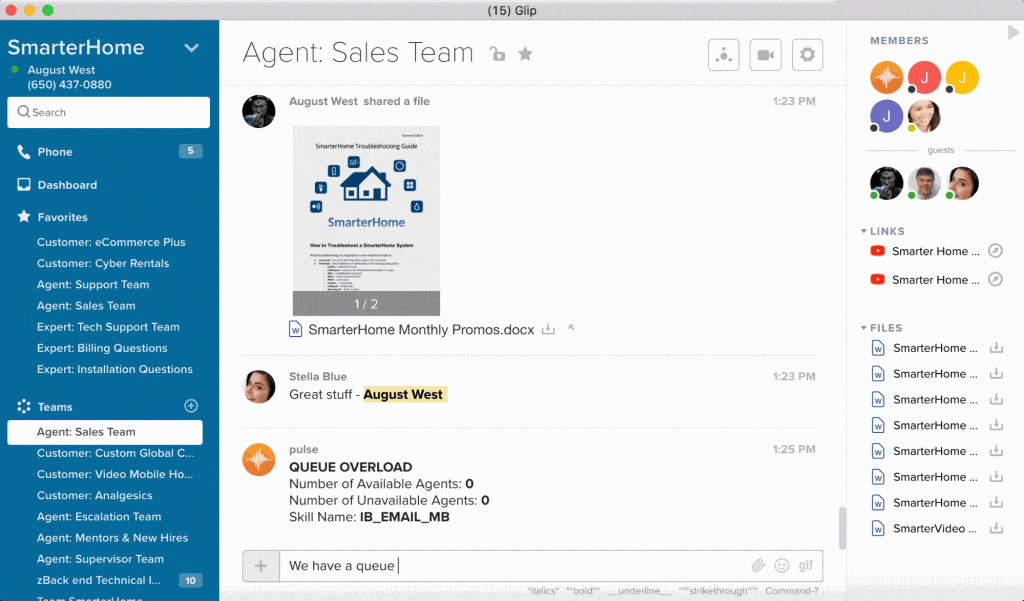
Having a team messaging app lets customer service reps communicate with each other in real time even when they’re on a call. From sharing a file to asking for help when there’s a backed-up queue, they can get the information they need without waiting hours or even days.
Keeping communication such as phone calls, messages, and texts in a single platform also means that you don’t have to toggle between windows and tabs. The end result: more customers served—and serious time saved.
2. Get aligned on your core beliefs and values
Pop quiz: what are your company’s values when it comes to customer service?
Teams today hold themselves to high standards because expectations from customers are higher than ever.
It’s not good enough just to answer questions. Looking at Zappos’ core values, we have a great example of how customer service teams can adopt a mission statement that’s easy to understand:

Whether or not you adopt a “WOW” mentality, having a defined set of goals and values gives your team a vision to rally around and consider when talking to customers.
3. Make your hiring and training process meaningful, memorable, and personal
So much of meeting customer expectations and delivering consistent service boils down to your approach to hiring and training.
If you can get your reps started on the right foot as soon as they’re hired, they’re more likely to adapt to the way you want to do customer service.
How do you make it happen, though?
Well, let’s look at an example. The customer service team at Zendesk advocates for a rep training program that’s “80% uniform.” In other words, reps go through a mostly similar set of exercises and scripts to foster a sense of familiarity for what effective service looks like.
Additionally, Zendesk also has new reps shadow more experienced reps—in addition to assigning them mentors.
This approach is brilliant—not only does it educate reps on what “good” service looks like, but it also helps new reps build relationships in the workplace.
4. Review your customer personas together
While customer and user personas are often associated with marketing and product teams, they’re incredibly valuable to reps who literally work with customers day in and day out. (And if you really wanted to do it right, you could adapt these marketing personas and add more details to them that relate to their preferences when it comes to customer service.)
To put together a persona, you need to break down the characteristics of your ideal customers. What are their pain points and challenges? What are their most common questions?
If you want to build up a kit of tools for your marketing stack, tools like Smaply and Hubspot’s Make My Persona are perfect for putting together detailed personas you can share with new hires:

It’s not uncommon for businesses to have multiple personas, by the way.
For example, you might serve both an older and younger demographic who support your business but are interested in two separate products.
These different types of customers probably ask different types of questions—and need to be handled in different ways. Your older customers may prefer to communicate over the phone, while your average millennial may be totally text-based and expect responses ASAP.
Chances are, you already have a good idea of what your customer personas look like. Regardless, they’re definitely worth writing out and reviewing with your team so everyone’s on the same page when handling customers.
5. Appoint a decision maker
This might seem obvious, but it’s definitely worth mentioning.
Not all businesses have a formal chain of command when it comes to customer service.
For example, some larger companies might have Tier 1 support staff who answer basic questions via scripts while Tier 2 and 3 agents are more hands-on, tackling problems that require serious technical know-how.
If you don’t have that level of structure for your small business , that’s okay.
What matters is that your reps have go-to teammates to report to in case they have a question or are dealing with something that’s beyond their scope of knowledge. By default, this responsibility will likely be assigned to more senior customer service managers.
The idea here is that your reps feel comfortable asking questions rather than trying to “wing it.” This is again an area where a communication tool like RingCentral is useful, as it lets reps quickly ask each other questions without wasting time.
6. Make customer information available to everyone
The more information you have on hand for any given customer, the easier it is to address their questions.
For example, let’s say someone hands off a customer to you that you’ve never talked to before. Without some sort of history or background information, it can be hard to find your footing in the conversation.
That’s a big reason why businesses are investing in CRM (customer relationship management) like never before. These platforms give you a bird’s-eye view of your customers, including their transaction history, notes from past conversations, and contact preferences (think: phone, email, text). With a CRM, you have a detailed history of your buyers and nobody ever feels like a stranger—even if it’s your rep’s first time talking to someone.
If your phone system or communication tool can integrate with a CRM like Zoho or Salesforce, it’ll make your life much easier. These integrations can do anything from automatically logging interactions such as calls, texts, and emails, to filling out information in your customer profiles for you:
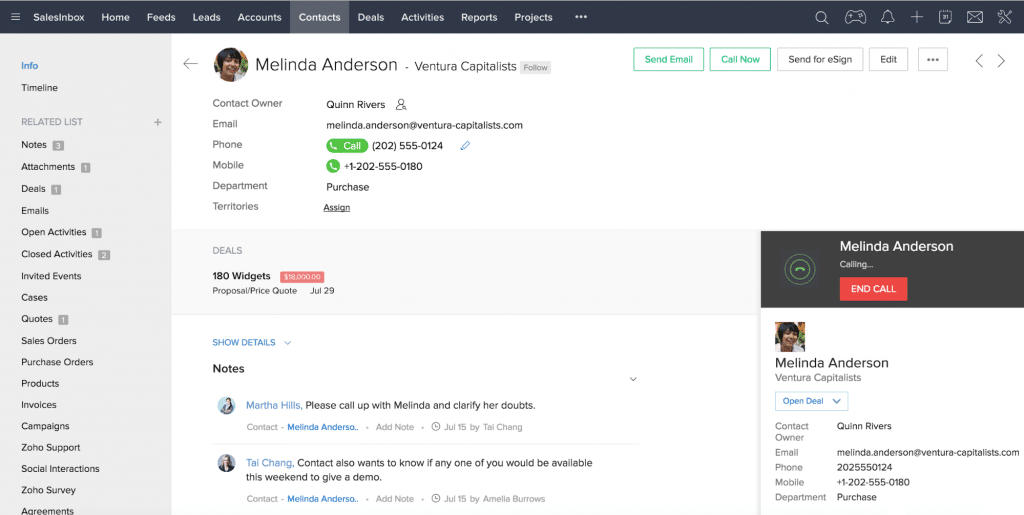
For example, Zoho CRM gives you a comprehensive profile of each of your customers, allowing you to log everything from notes between reps to calls made from RingCentral’s app.
7. Be open about your goals and objectives
Finally, reps should regularly review their goals and more importantly, understand how their individual performance contributes to the business as a whole.
For example, you may be laser-focused on lowering customer turnover or scoring more positive feedback from buyers. Regularly reporting on these data points will help tie your customer service efforts to concrete metrics that encourage your team to improve over time.
For reference, Xtension’s free customer success report template is a great example of how to organize your customer service metrics and talking points:
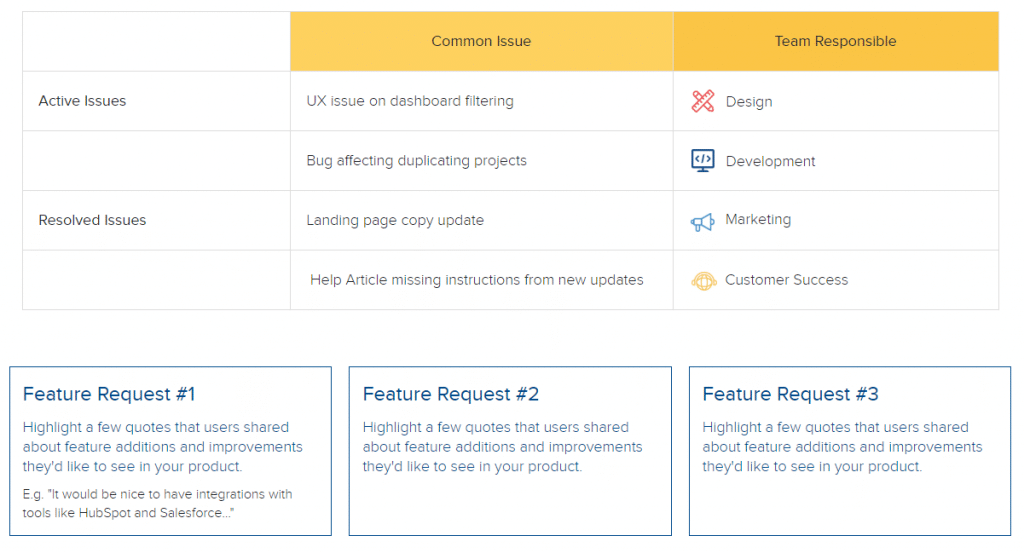
What’s the most common reason for the inbound calls you’re getting? What does turnover look like? These answers should be discussed in the open with your team.
Of course, you need a way to get those numbers and metrics (Whatever service you’re using for your business phone or communications should have that performance data for you.) For example, RingCentral’s analytics portal includes quality of service reports and call center metrics so you can see things like how quickly you’re picking up your customers’ calls:
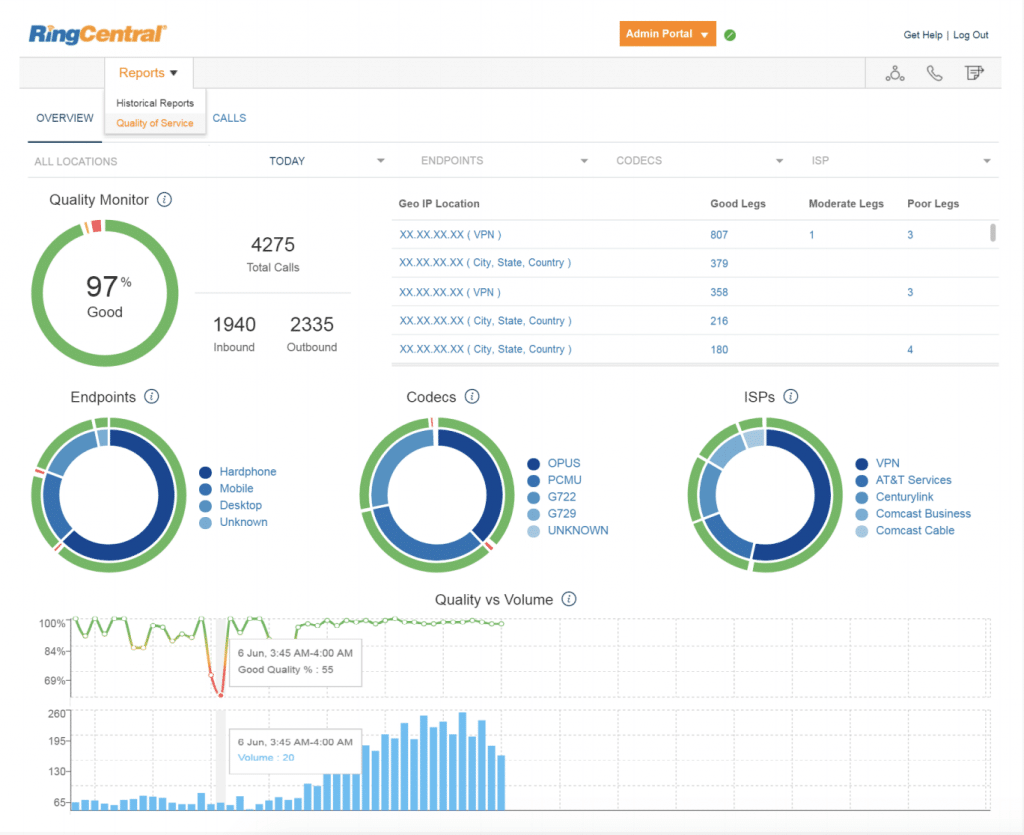
With RingCentral, you can see when call volumes are high, how long people are waiting on hold, and more.
This can serve as serious motivation for reps looking to improve their individual numbers—and to help the team, of course.
Ready to level up your customer service teamwork?
Teamwork and customer service go hand in hand, and both your reps and customers benefit when teams work together.
From resolving more questions more quickly to building stronger relationships with customers and colleagues, the upside of a team-based approach to customer service is huge.
With the tips and tools above, you can make it easier for your team to provide the kind of customer service that keeps people coming back—and that can make the difference when you and your competitors are neck-in-neck.
Originally published Mar 05, 2020, updated Jun 17, 2022


